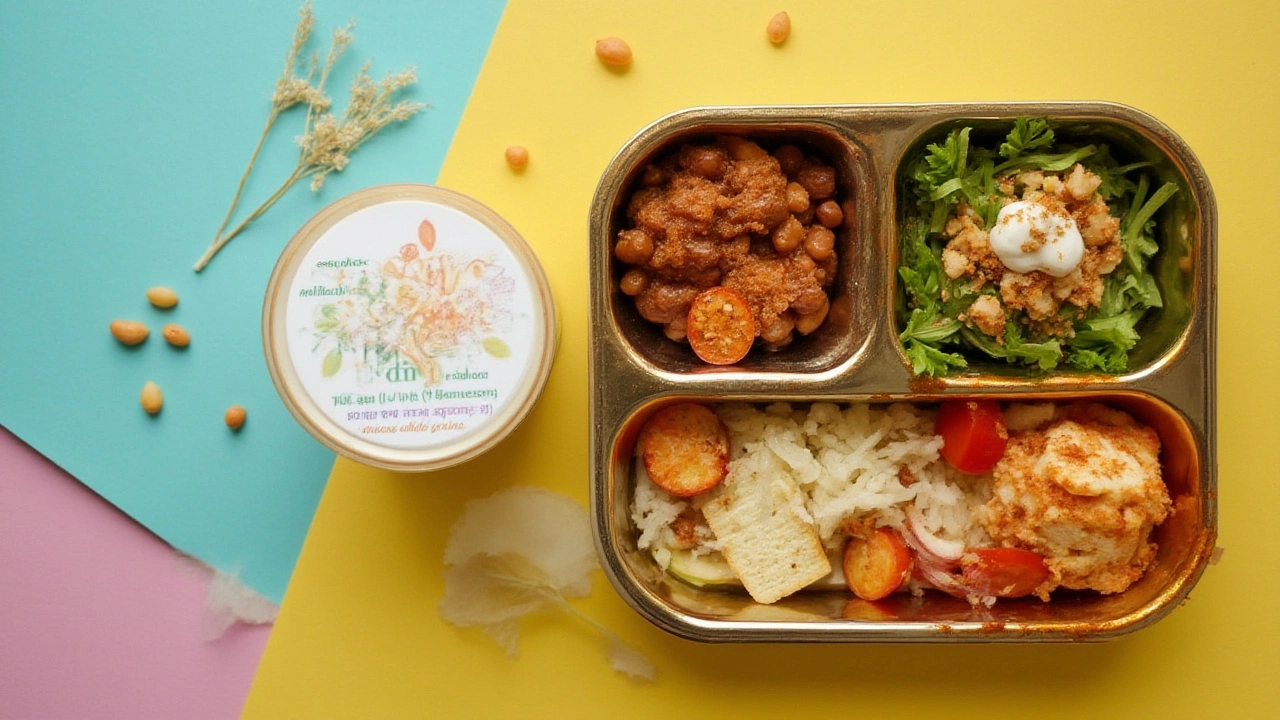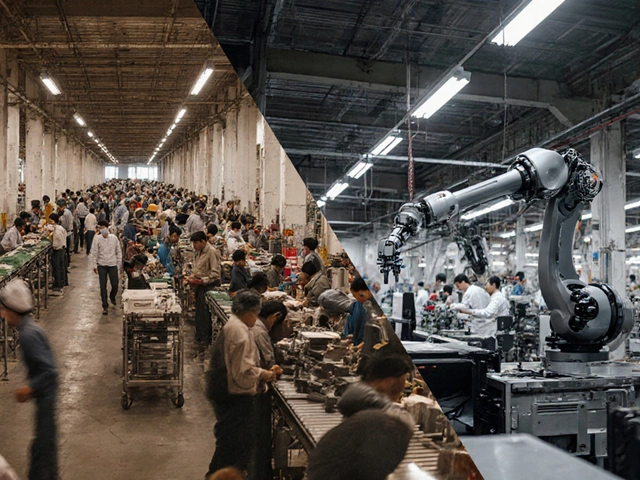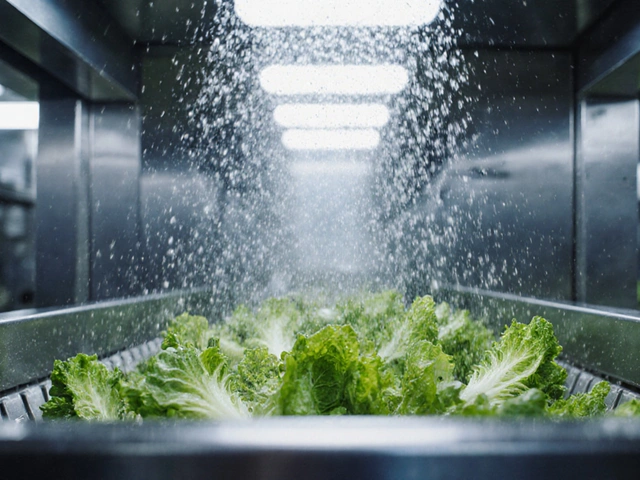What is the #1 Unhealthiest Food? Exploring the Worst Offenders for Your Health

Ever wonder what food experts would ban if they had the power? The kind of stuff that makes nutritionists throw up their hands in despair and doctors sigh when they check your blood pressure? People love talking about superfoods, but rarely do we shine the spotlight on the true villains lurking in our pantries. When it comes down to it, there’s one thing with a notorious reputation that keeps topping the 'do not eat' lists. And no, it’s not that guilty pleasure burger or even donuts. Stick around—you’re about to find out what food most researchers, doctors, and health organizations regularly name as the #1 unhealthiest food, why it’s so bad for you, and how to spot it before you tear into that next snack.
The Worst Culprit: Ultra-Processed Foods—and What Makes Them Dangerous
Let’s cut straight to it. After years of research and mounting medical evidence, most experts agree: the absolute worst food for your health is ultra-processed food. Sure, things like soda, candy bars, or chips top the junk food list, but ultra-processed foods—a category holding all these offenders and more—take the crown. So what makes something ultra-processed? In practical terms, these are foods that come in a box or bag, made in factories with ingredients you won’t find in a typical kitchen: artificial flavors, emulsifiers, chemical preservatives, and loads of added sugar, fat, and salt. A typical ingredient list will read like a chemistry exam.
Check out your favorite chips or convenience meals, and you’ll see the pattern: ingredients like maltodextrin, high-fructose corn syrup, monosodium glutamate (MSG), artificial colors, and hydrogenated oils. Research from the British Medical Journal in 2019, which analyzed over 100,000 people, showed those who ate the most ultra-processed foods were over 60% more likely to die early compared to those who ate the least. And that wasn’t a one-off finding; dozens of similar studies have shown links between these foods and heart disease, diabetes, obesity, and certain cancers. Even mental health isn’t spared: a 2022 study connected high consumption of these foods to increased depression and anxiety in adults under 50.
The scariest part? Ultra-processed foods make up more than HALF the calories consumed by the average adult in the United States—a stat that doesn’t look much better in most of Europe or Australia. Take a look at the data below, and let it sink in.
| Country | Percentage of Calories from Ultra-Processed Foods |
|---|---|
| USA | 57% |
| UK | 56% |
| Australia | 61% |
| France | 35% |
| Brazil | 21% |
Why are these foods so bad for us? For starters, they tend to pack in a huge calorie punch without much nutrition—lots of “empty” carbs, hardly any fiber, and barely any protein or vitamins. Now imagine your liver, pancreas, and heart trying to process this chemical soup every single day. Ultra-processed foods can spike blood sugar, mess with cholesterol, raise blood pressure, and promote stubborn belly fat. Need a real-world example? Consider ready-made frozen pizzas, snack cakes, instant noodles, and sugary breakfast cereals. All of these are ultra-processed, and all of them sit at the top of the worst-food pyramid.
Take sodium content. The average American eats about 3,400 mg of sodium per day—almost 50% more than the recommended limit. Most of that salt comes from, you guessed it, processed and packaged foods. Too much sodium increases your risk for high blood pressure, heart disease, and stroke. Or how about trans fats, lurking in things like margarine, microwave popcorn, or packaged baked goods? Even in tiny amounts, trans fats drive up “bad” LDL cholesterol, raise inflammation, and clog arteries faster than you can finish your snack.
The story doesn’t end there. The crazy mix of chemicals, colorings, and preservatives isn’t just a label problem. Some recent animal studies suggest certain preservatives can mess with gut bacteria, possibly weakening your immune system. Others hint at effects on learning and behavior, especially for kids. Long story short: these foods hammer almost every system in your body.

Sneaky Ways Ultra-Processed Foods Hook You
If ultra-processed foods are so bad, why do we keep going back for more? Turns out, it’s not just about taste. Food companies actually design these products to override your brain’s hunger signals, making you want more even when you’re full. They play with textures, colors, and noises (that crunch!) for maximum sensory reward. A 2023 study from Yale showed that “hyper-palatable” foods light up your brain’s reward center just like addictive drugs do. In plain English: the food industry uses science to hack your willpower.
These foods are engineered to deliver that perfect combination of salty, sweet, and fatty flavors—critically, all at once. That’s why nobody ever binge eats carrots or apples. But a bag of cheese-flavored puffs? That willpower melts away fast. Even their portion sizes are meant to trick you. Ever notice how mini snack packs never actually leave you satisfied? They’re designed for eating on autopilot, often while distracted by TV, work, or your phone—leading to mindless overeating.
Marketing does the rest. Who doesn’t remember some catchy jingle tied to cookies or soda growing up? Kids see thousands of food ads every year—over 90% of which are for unhealthy processed foods. No surprise, then, that children end up with lifelong cravings for these products. And the packaging isn’t innocent, either. Think about the cartoon mascots, limited-edition flavors, and eye-catching designs filling entire supermarket aisles. The science is clear: bright, colorful wrappers make a food seem tastier, more fun, and harder to resist—even when it’s objectively terrible for you.
Accessibility is another part of this trap: ultra-processed food is everywhere. Vending machines, gas stations, convenience stores, even pharmacies stock more of these options than fresh, whole foods. And they’re almost always cheaper per calorie than fresh produce or healthy snacks, especially in lower-income neighborhoods often called "food deserts." People busy with work or studies, or parents rushing kids between activities, reach for convenience first—which usually means reaching for ultra-processed snacks or meals.
The long-term result? People end up in a tough spot where the easiest, cheapest, and most advertised foods are exactly the ones that do the most damage. And the cycle just keeps repeating: you eat more, crave more, get less healthy, and have a harder time stopping. There’s even a word for it now—"craveability." Processed foods are built to keep you coming back, not getting nourished.

How to Spot and Avoid the Worst Foods—Simple Swaps and Smart Hacks
The first step is knowing how to spot ultra-processed foods. It’s actually pretty simple: check the ingredient list. If there are more than five or six ingredients, or you see lots of names you can’t pronounce, there’s a good chance it’s ultra-processed. Ingredients like "partially hydrogenated" anything, "high-fructose corn syrup," color additives with numbers (like Red 40 or Yellow 5), and "modified" starches are dead giveaways. Think about this: a homemade loaf of bread is just flour, water, salt, and yeast, but supermarket bread can have upwards of 20 ingredients—including some you wouldn’t expect. If you want to eat better, read those labels!
So what can you eat instead without giving up on taste or fun? Real food doesn’t have to be boring or bland. Here are some practical swaps:
- Swap sugary breakfast cereals for steel-cut oats or overnight oats sweetened with fresh berries and a dash of honey.
- Instead of potato chips, try air-popped popcorn seasoned with olive oil and herbs.
- Banish frozen meals in favor of batch-cooked brown rice with grilled chicken and veggies. Make extra and eat leftovers for lunch!
- If you’re craving something sweet, reach for Greek yogurt mixed with fruit and nuts, not candy bars.
- Replace soda with sparkling water or homemade iced tea flavored with citrus and mint.
Making better choices doesn’t mean you have to go all-or-nothing. Start by cutting back on the unhealthiest food offenders one meal or snack at a time. Research shows that just reducing your intake of ultra-processed foods can lead to better weight control, healthier cholesterol, lower blood pressure, and even a brighter mood. Bring more real food onto your plate, like fresh fish, lean meats, eggs, beans, fruits, and vegetables. Even whole grains like brown rice, oats, and barley provide steady energy with none of the hidden downsides.
Boredom can be an enemy here, so get creative. Roast chickpeas with spices for a crunchy snack. Mix nuts and dried fruit for homemade trail mix. Or bake apple slices with cinnamon as a dessert. Meal prepping on weekends saves you from falling into fast food traps when you’re busy. If you have kids, get them involved in meal prep and food shopping—it helps build lifetime good habits and makes eating healthier feel less forced.
One last tip: watch out for "health washing." Food companies love using buzzwords like "natural," "whole grain," or "low fat" on packages, but these claims don’t always mean the product is healthy. A granola bar with a laundry list of ingredients is still ultra-processed. Don’t fall for it. Stick to real, simple foods as often as possible for the best shot at dodging the worst that supermarkets have to offer. Your body—and your future self—will thank you for it.





